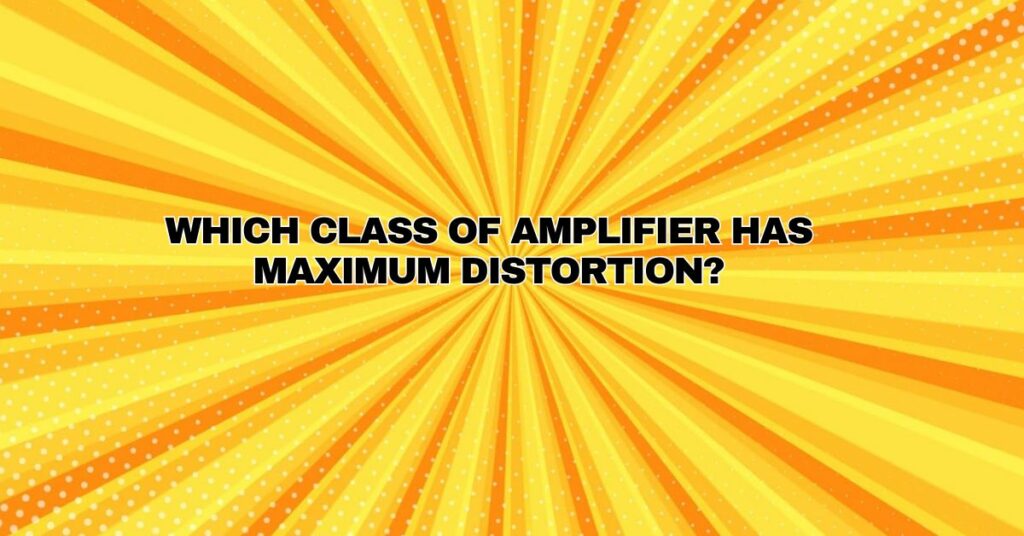Amplifiers are essential components in audio and electronic systems, responsible for amplifying signals to desired levels for various applications. Different amplifier classes exist, each with its own unique characteristics, and one important aspect often associated with amplifiers is distortion. In this article, we will explore the various amplifier classes and examine which class is typically associated with maximum distortion.
Amplifier Classes Overview:
Amplifier classes categorize amplifiers based on their operating characteristics and conduction angles. The most common amplifier classes include Class A, Class B, Class AB, Class C, Class D, and Class H. Each class has its own set of advantages and disadvantages, and the level of distortion can vary significantly between them.
Understanding Distortion:
Distortion in amplifiers refers to any alteration or deviation of the output signal from the input signal. It can manifest in various forms, such as harmonic distortion, intermodulation distortion, and transient distortion. In general, lower distortion levels are desirable, as they result in faithful signal reproduction.
Amplifier Classes and Distortion:
- Class A Amplifiers: Class A amplifiers are known for their excellent linearity and low distortion characteristics. They conduct over the entire input cycle, which minimizes crossover distortion. While they exhibit low distortion, they are also less efficient and generate more heat due to continuous operation.
- Class B Amplifiers: Class B amplifiers operate with one transistor conducting for half of the input cycle and the other for the remaining half. This results in crossover distortion, where there is a gap between the two conducting transistors, leading to increased distortion in the transition region.
- Class AB Amplifiers: Class AB amplifiers combine characteristics of Class A and Class B amplifiers. They aim to reduce crossover distortion by having both transistors conduct over a portion of the input cycle, but not the full cycle. This results in improved efficiency and reduced distortion compared to pure Class B amplifiers.
- Class C Amplifiers: Class C amplifiers, while highly efficient, are primarily used in high-frequency applications, such as RF (Radio Frequency) amplification. They are inherently non-linear and have high distortion due to their on-off switching behavior.
- Class D Amplifiers: Class D amplifiers, also known as digital amplifiers, use pulse-width modulation (PWM) or similar techniques to amplify signals. They are highly efficient and can produce low distortion levels when well-designed. However, their linearity can be affected by switching frequencies.
- Class H Amplifiers: Class H amplifiers are designed to improve the efficiency of Class AB amplifiers by varying the supply voltage based on the input signal. While they can reduce heat generation and improve efficiency, distortion levels are typically kept within acceptable limits.
Conclusion: The Class with Maximum Distortion
Among the common amplifier classes, Class C amplifiers are generally associated with the highest distortion levels. This is primarily due to their inherent non-linearity, on-off switching behavior, and their primary use in high-frequency applications where distortion may be less critical compared to efficiency.
For applications where low distortion is a top priority, such as high-quality audio reproduction, Class A and Class AB amplifiers are preferred choices due to their superior linearity and low distortion characteristics. It’s important to select the amplifier class that aligns with your specific application and distortion requirements, as each class offers a different balance between efficiency and signal fidelity.


